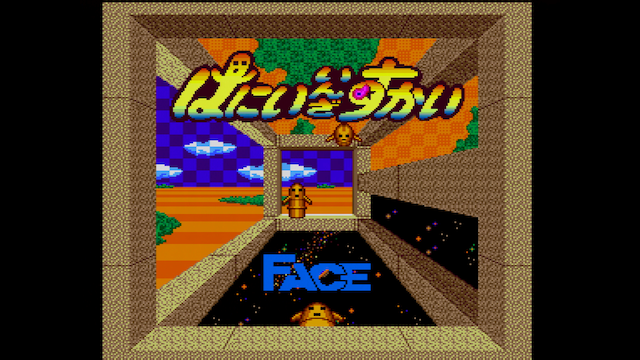What on Earth is a SuperGrafx?!
The TurboGrafx-16/PC Engine has been the focus on this blog lately, and that’s totally fine by me. We looked at the LaserActive PAC-N1, a bizarre hybrid between the 8-bit console that could and a LaserDisc player. It had just 11 games! But what if there was another PC Engine spinoff… an earlier one, that had even fewer games… is it possible?
The Legend of SuperGrafx
It’s the late 1980s, and you’re in charge of NEC Home Electronics. You’re doing pretty well for yourself; your PC Engine console has an early lead in Japan, finally doing what Sega couldn’t and properly challenging Nintendo’s unstoppable Famicom. But there are clouds on the horizon: your American launch has been delayed, and Sega’s bringing out a true 16-bit console with a more powerful CPU and graphical capabilities, including parallax scrolling.
What do you do?
- Release a CD-ROM add-on, taking advantage of your early involvement in that technology, and make up for your console’s graphical shortcomings through brute force of 650MB discs
- Force Hudson Soft to rush through the second iteration of the console in order to get something with a second background layer out
NEC chose, naturally, to do both. The PC Engine CD-ROM2 system has already been the subject of some discussion on this blog. It was a pretty large success, despite some aggressive technical limitations. But what about the next iteration of the PC Engine?
Behold

The PC Engine SuperGrafx is, quite frankly, one of the most ridiculous looking consoles ever made. The PC Engine is a cute white box that is still tiny even by modern standards; the SuperGrafx goes as hard as it can in the opposite direction, and ends up looking like a child’s toy truck. Did you want a console that you need an Allen key to open? Well, keep looking, those are plastic.

Just like the PC Engine and the TurboGrafx-16, it has only one controller port on the front, and a multitap is required for up to 5 players. It also has an expansion port next to it, but as far as I know that had no uses.
But we’re not here to make fun of the SuperGrafx’s design; plenty of ugly consoles have been released before, and will continue to be released. It’s what’s on the inside that counts.
Starting off by talking about the Famicom
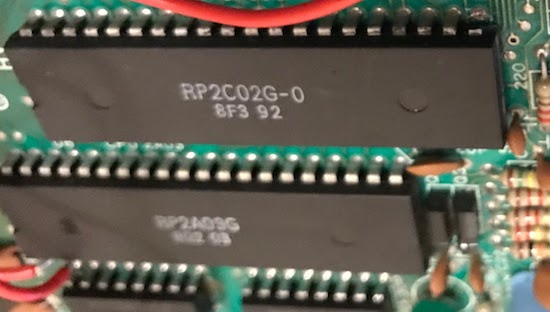
When you ignore all the other chips (RAM, glue logic, the RF modulator, etc), the Nintendo Famicom is essentially a two-chip system.
- The 2A03, a combination 6502 CPU core (with patented features disabled) and audio synthesizer.
- The 2C02 “Picture Processing Unit”, which handles everything graphical: tiles, sprites, and outputs a composite video signal.
One advantage of this design is its simplicity. A downside, however, is that if you treat the PPU as a black box, it basically takes in raw commands and outputs composite video; there’s no in-between, and no way to get video output other than composite. (You might ask how RGB mods on the console work, and that’s very interesting! But outside the scope here)
The PC Engine also has a combined CPU and audio synthesizer, the HuC6280. However, the role of the PPU is played by two separate chips:
- The HuC6270 “Video Display Controller”, which handles graphics and sprites, and outputs digital video output
- The HuC6260 “Video Color Encoder”, which takes the digital video, and applies a color palette and outputs RGB and composite video.
What does the intermediate digital color signal look like? Looking at the the pinout of the HuC6270 can reveal which signals are used:
- Pin 28: SPBG, whether a pixel is a sprite or background
- Pin 29, 30, 31, and 34: A 4-bit palette value
- Pin 35, 36, 37, and 38: A 4-bit palette index
We can map this to what we know about the PC Engine already: there are 32 16-color palettes, 16 for sprites and 16 for backgrounds. The VDC, therefore, doesn’t actually need to know what the palettes are. It just sends indicies to the VCE, which actually does the encoding. The VCE uses 9-bit RGB palettes, but from the perspective of the VDC, it could be 24-bit YPbPr or anything else.
(As an aside, this does open an interesting question: could you make a replacement VCE (using an FPGA, perhaps) that converts this signal to an HDMI output? Most likely, yes! However, since the VCE already outputs a high-quality RGB signal natively, there’s been no need for this. And remember, you’d still need to digitize the CPU’s audio output.)
So what does the SuperGrafx do
The SuperGrafx, released in December 1989, was rushed to market; initially, rumors said it would be a “PC Engine 2” with a true 16-bit processor and multiple scrolling background layers. What did we actually get?
- The same HuC6280 CPU, with the same audio capability
- The same HuC6260 VCE, with 16 sprite and 16 background palettes made up of 16 colors each, using 9-bit RGB palettes
But most importantly:
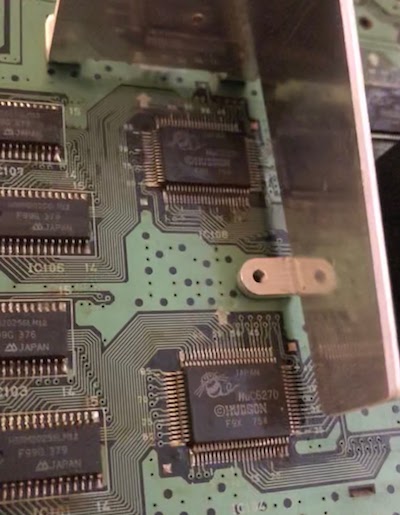
Two HuC6270 Video Display Controllers. When the Nintendo Wii was released, its hardware similarity to its predecessor caused it to be mocked as “two GameCubes duct-taped together”. The SuperGrafx takes that literally: it is two PC Engine graphics chips duct-taped together.
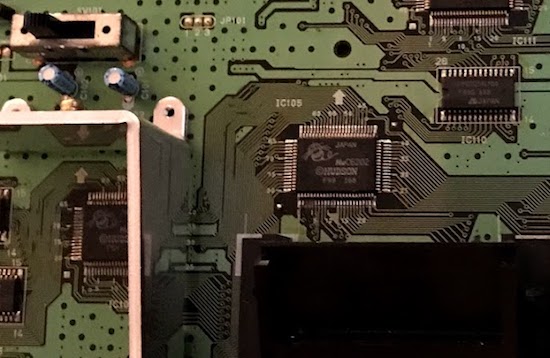
And in tonight’s performance, the role of the duct tape is played by the HuC6202 Video Priority Controller. Now, finding documentation on this chip is quite a bit harder than the PC Engine’s, but what it does is essentially stitch the two images from each VDC together. Sprite and background priority gets a bit complicated, but overall the VDC’s main job is just to pick one of two signals to send on to the VCE.
Thus, the SuperGrafx achieved its goal of hardware parallax scrolling, by providing a second background layer; a second sprite layer also helped with shoot-em-ups, which are notorious for flicker on the PC Engine, especially in earlier games like R-Type. The two layers share the same palettes, but the PC Engine’s palette range is huge; compare the 32 palettes to the Sega Genesis’s, uh, four.
Still, the SuperGrafx wasn’t exactly an overwhelming update. (It also added more work RAM, and each VDC has its own 64KB of VRAM to itself)
Let’s take a look!
You didn’t come here to just look at photos of circuit boards, did you? If you did, that’s fine. But we’re also going to get some screenshots from the console. But first, another circuitboard photo.

To capture video, we’ll be using an adapter that plugs into the expansion port of the SuperGrafx, and provides a Sega Genesis 2-compatible output port. I have a few Genesis 2 SCART cables lying around, so this is a good option. I imagine there are better converters out there; the main thing I know to look for is the presence of an RGB amplifier, as the raw RGB signals from the console aren’t suitable. (This expansion port is the same as the PC Engine; unfortunately, it’s unavailable on the Duo consoles that include a CD-ROM system built in)
Video is then routed into my Framemeister, and captured from an Elgato HD 60 S. This is the same setup used in the recent Sega Genesis port, and this time we won’t be messing with composite video at all, so this should be solid. Let’s start.
Battle Ace
The first game to come out for the SuperGrafx was Battle Ace, a cockpit space shooter. In fact, between November 30, 1989 and April 6, 1990, it was the only game available for the console. Let’s take a look.
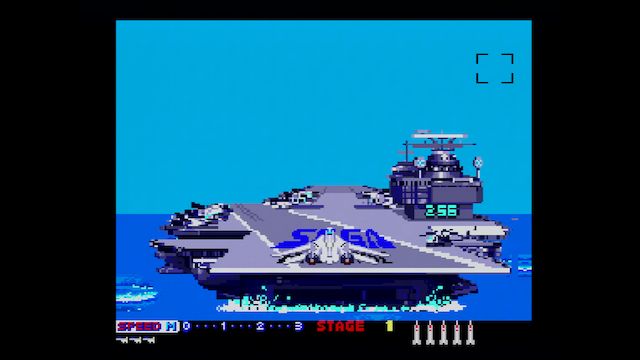
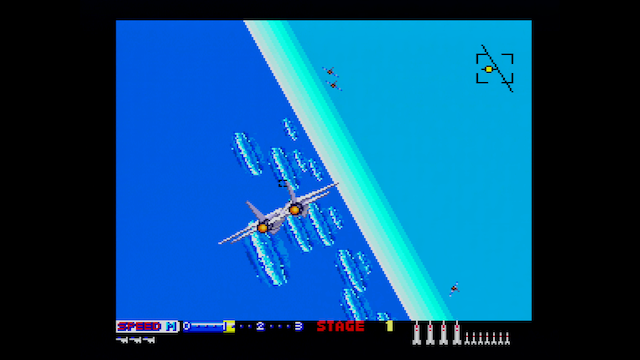
You can see some definite influence from Sega’s After Burner II, and in fact– this is NEC Avenue’s port of After Burner II, released in September of 1990. This isn’t a SuperGrafx game at all. It’s a great port, though. Moves fast and fluid, and even has what look like scaling enemies. Well, with those extra layers I bet it’ll be more impressive:
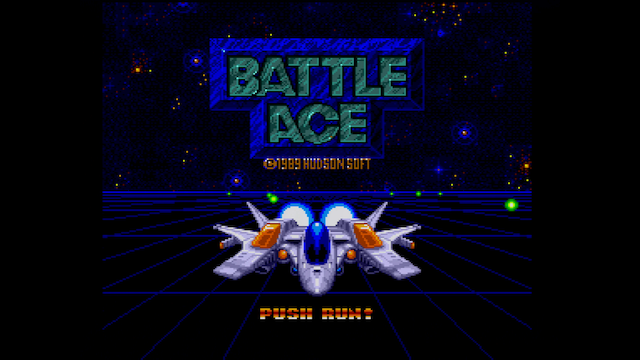

Battle Ace uses that extra layer to show a cockpit, rather than having the plane as a sprite in the center of the screen. Unfortunately, that’s about it as far as I can tell. Overall, the game just isn’t that impressive otherwise. At least for me, the crosshair aiming feels wonky, and it’s much easier to aim in After Burner II.
This was the only exclusive for the console for nearly six months! Hard to imagine this selling many consoles.
Daimakaimura
The other SuperGrafx exclusive I’ll take a look at is Daimakaimura, better known to us Americans as Ghouls ‘n Ghosts. (Daimakaimura means “Great Demon Village”, the sequel to Makaimura, “Demon Village”, also known to use as Ghosts ‘n Goblins) This game was released on the SuperGrafx on July 27, 1990. It’s generally seen as one of the best games for the console. For reference, the Genesis port came out October 29, 1989 in Japan.
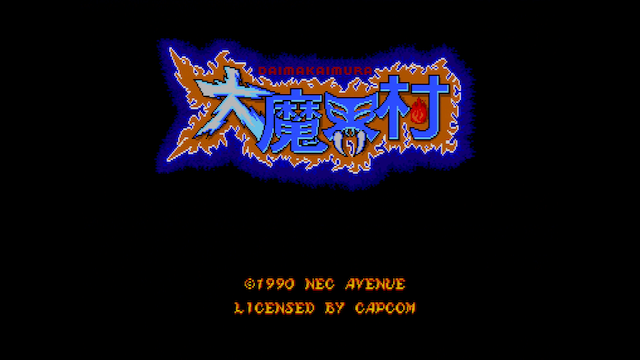


It’s a pretty good conversion. The additional background layer provides some nice scrolling, and the PC Engine’s sound chip may not be at all upgraded in the SuperGrafx, but it does a really good rendition of the level’s theme. You can also see good use of colors.
But let’s be fair, here, and compare it to another console with 16-bit graphics capability:
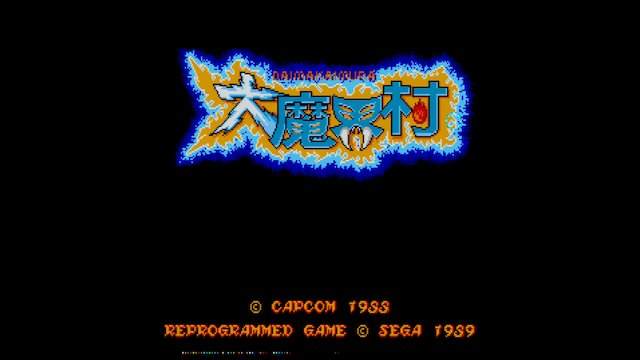
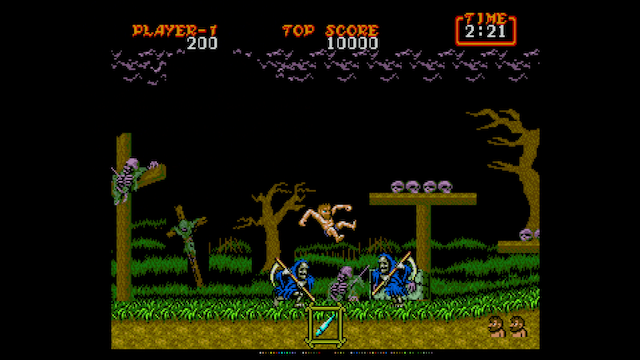
Compare those two screenshots of Arthur being injured by my poor gameplay (on level 1!). You can definitely see the Genesis suffer in comparison; look at the ground and the clouds. The SuperGrafx has more color, and twice as much VRAM. It’s no wonder that this port is held up as some of the best the SuperGrafx has to offer.
Darius Plus
Darius Plus is a port of the space shooter Darius to the PC Engine, being released on HuCard on September 21, 1990. And I do mean PC Engine; this is a unique title in that it supports both the SuperGrafx and PC Engine, while also providing additional features to the former.
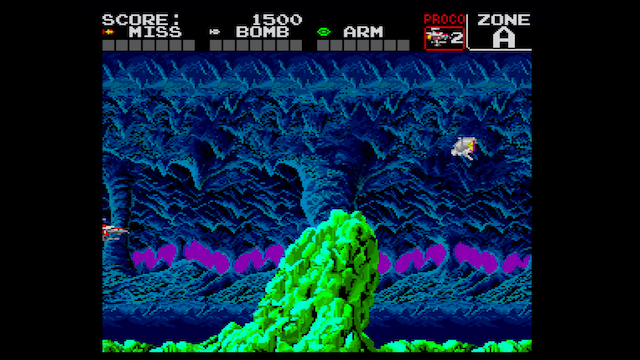
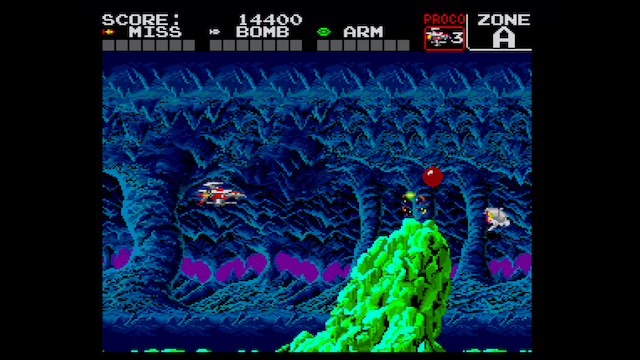
Unfortunately, the difference can’t be seen in screenshots; in fact, it’s rather subtle. The parallax scrolling here is done entirely with one VDC; instead, the second VDC is used for more sprites to reduce flickering. It’s definitely a nice bonus, but there’s a reason this game never heavily advertised SuperGrafx compatibility.
UPDATE 9/24: It turns out this game did advertise its SuperGrafx compatibility, with a “PC-SG” logo I’ve never seen anywhere else. In my defense, they placed a white logo in white exhaust. (Photo from an ebay listing)
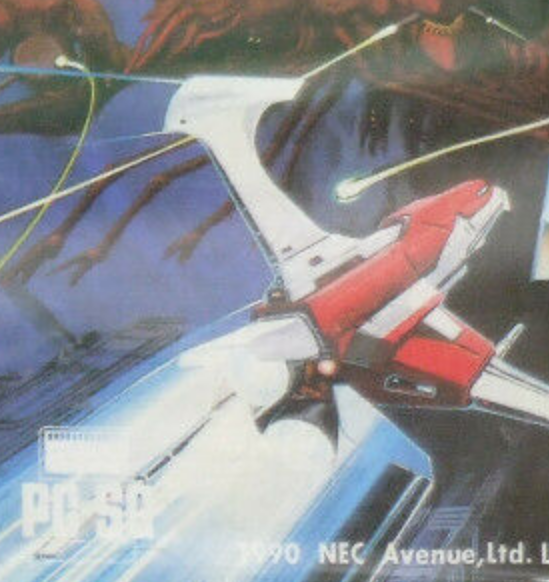
Space Harrier
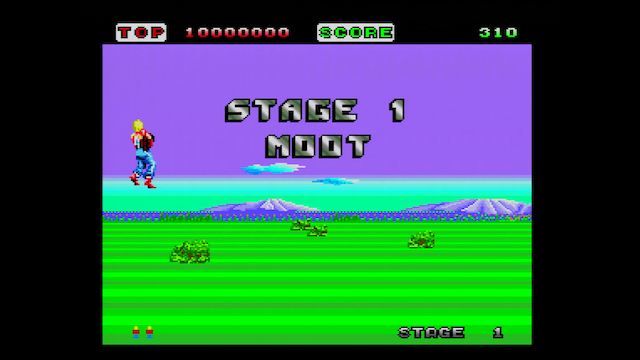
Space Harrier came out for the PC Engine in Japan on December 9, 1988. It’s a decent port and all, but this was a year before the SuperGrafx launched, and given the major changes it went through in development, there’s no reason why it should be shown in a SuperGrafx blog post.

Ah, that’s why. The port of Space Harrier crashes and blanks the screen when played on a SuperGrafx. It’s a bit random when it’ll happen, but it will happen.
So why is this? The graphics chip on the PC Engine has a number of addresses it can be accessed through, called “registers”. These addresses are mirrored; this means that there are multiple addresses that go to the same place. FF:0000, FF:0008, and FF:0010 are all the VDC register index on a PC Engine. Writing to them does the same thing.
The SuperGrafx, though, reuses the mirrored addresses. FF:0000 is the first VDP, FF:0008 is now where you’ll find the VPC registers, and FF:0010 is the second VDP. So if a PC Engine game wrote to the correct addresses, it’ll “just work” on SuperGrafx. If they didn’t do that, the game won’t work.

Thankfully for fans of Space Harrier, the designers did think of this. There’s a tiny little switch on the back of the system, which when it is in position “II”, it disables the additional chips. Of course, this means you can only play PC Engine games, but at least they’ll be sure to work.
So, those sure are some super grafx you’ve got there
It’s not surprising that the SuperGrafx wasn’t very successful. Its singular launch title was disappointing, and it wasn’t a huge upgrade over its predecessor. It was a viscious cycle: Without good sales, there was no reason for developers to make exclusives for it. Without exclusives, there was no reason to buy it.
The last SuperGrafx exclusive, 1941: Counter Attack, came out on August 22, 1991. That makes a grand total of six exclusives, plus Darius Plus and Darius Alpha, a limited-release special edition of Darius Plus that seems to exist primarily to make it hard to collect a complete set of SuperGrafx-compatible games.
It wasn’t all doom and gloom for SuperGrafx owners. The PC Engine remained strong, and continued to get new releases for years to come. The CD-ROM system was also compatible with the SuperGrafx; but that really deserves (and hopefully, will soon get) a blog post of its own.
So for now, I’ll leave you a picture of the title screen of Honey in the Sky running on a SuperGrafx. This is completely identical to the PC Engine version, but hey, I have to end this post somehow.
